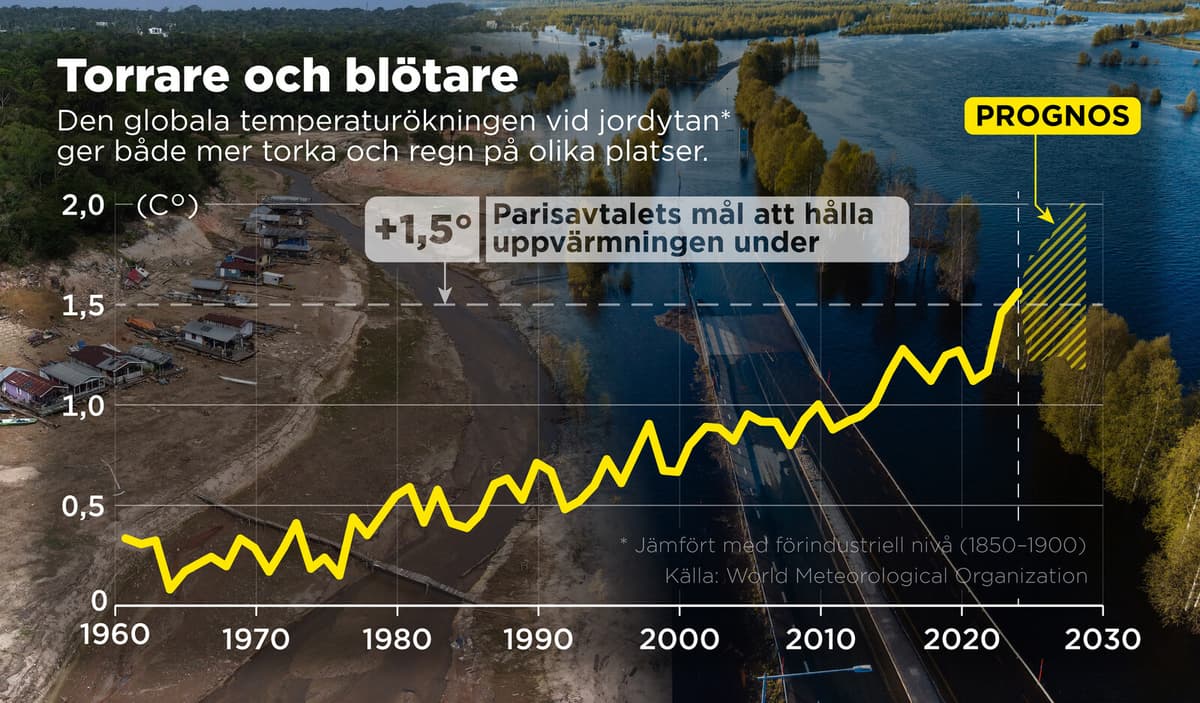The warmed-up globe does not seem to be getting any respite. The global warming, mainly caused by the burning of fossil fuels, is expected to lead to significantly warmer temperatures than the pre-industrial average.
According to Markku Rummukainen, professor of climatology at Lund University, it is a relatively new phenomenon to look at this time span, midway between traditional weather forecasts and long-term climate scenarios.
The better these types of calculations become, the more opportunities there will be for example the energy sector, agriculture, the insurance industry, and water handling to prepare themselves, he says.
Anna Rutgersson, professor of meteorology at Uppsala University, agrees:
It is the type of activities that I think can benefit from this. I don't think you should use it to plan your vacation.
1.5-degree target still current
According to the WMO, there is a 70 percent risk that the entire period will be 1.5 degrees warmer than the period 1850-1900. Despite this, the WMO emphasizes that the so-called 1.5-degree target – which the world's countries have agreed to try to keep the warming below – is still alive. The target is based on a 20-year average.
There is a risk that we have entered the 20-year period since we are now seeing such warm years and the warming continues. But it will take a few years before it shows, says Rummukainen.
Wet and dry
The summers in northern Europe are expected to be wetter than we are used to.
You shouldn't see it as now it's going to rain more in Sweden within five years, it's quite uncertain. But the five-year forecast is an overall indication that it will get wetter, says Rutgersson.
At the same time, it is expected to remain abnormally dry in the Amazon, where water levels in the river system have been low and drought has led to fires.
A drier Amazon is a problematic signal, notes Rutgersson.
Over the Arctic, the coming five winters are expected to be significantly warmer than average. Here, researchers expect a 2.4-degree average temperature. The warmer weather is expected to hit hard on the sea ice in the region.
.
TT
The World Meteorological Organization (WMO) has, based on today's climate, run computer models from 14 research institutes for the period 2025-2029, to calculate how the Earth's climate is likely to develop.
The calculations show:
+ 80 percent risk that at least one of the coming five years (including this year) will be record warm.
+ 86 percent risk that at least one of the years will be at least 1.5 degrees warmer than the pre-industrial average (1850-1900).
+ 70 percent risk that the entire period will be at least 1.5 degrees warmer.
+ That the global temperature during the period will be 1.2-1.9 degrees above average.
TT
The Paris Agreement is an international agreement on climate change, adopted by 196 countries at the climate meeting COP21 in Paris 2015.
The goal is to keep the global temperature increase, mainly caused by human burning of fossil fuels, well below 2.0 degrees, preferably 1.5 degrees, by the end of the century.
The last ten years (up to and including 2024) have had an average increase of 1.26 degrees.
The Paris Agreement also contains a framework for rich countries to support poor countries economically in the transition.
The goal is set to alleviate the most devastating effects of climate change, which become worse for every tenth of a degree the Earth warms up.
Source: UNFCCC, Swedish Environmental Protection Agency





